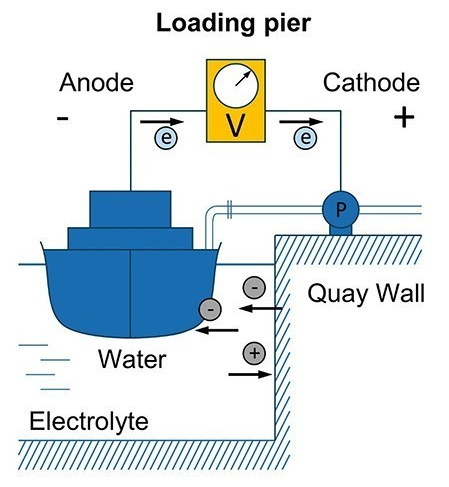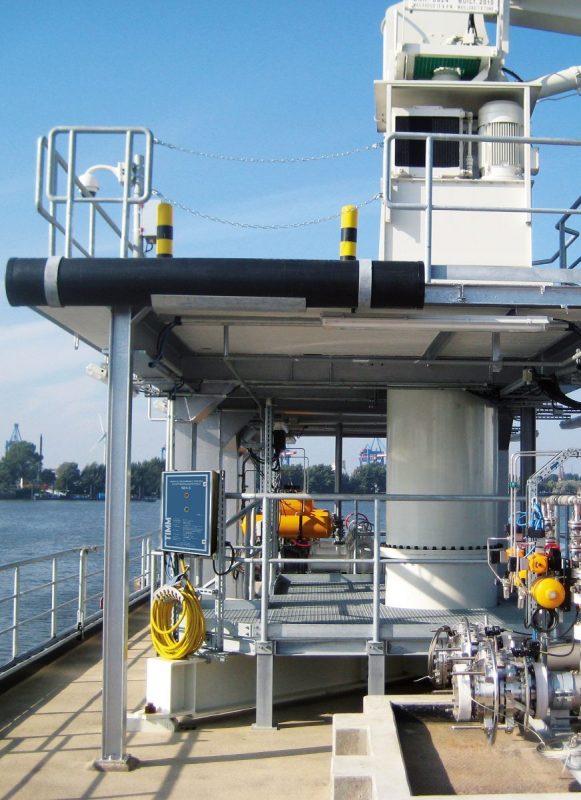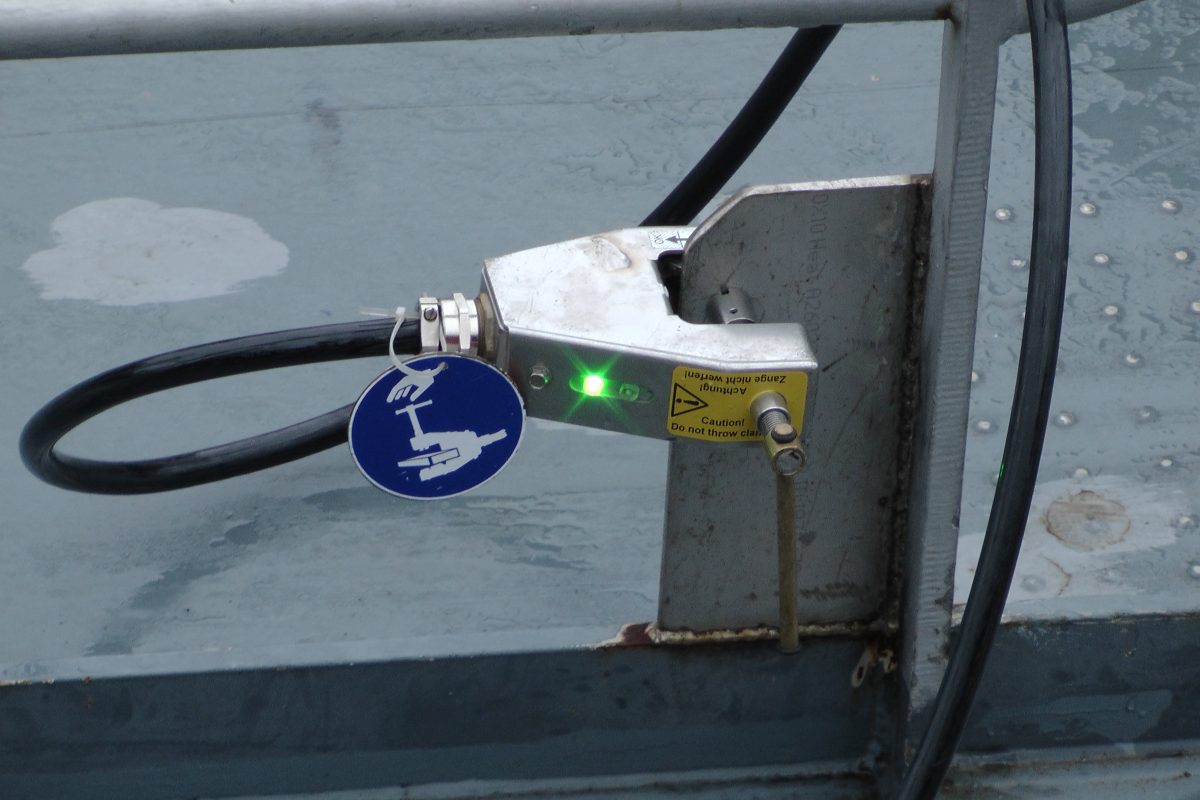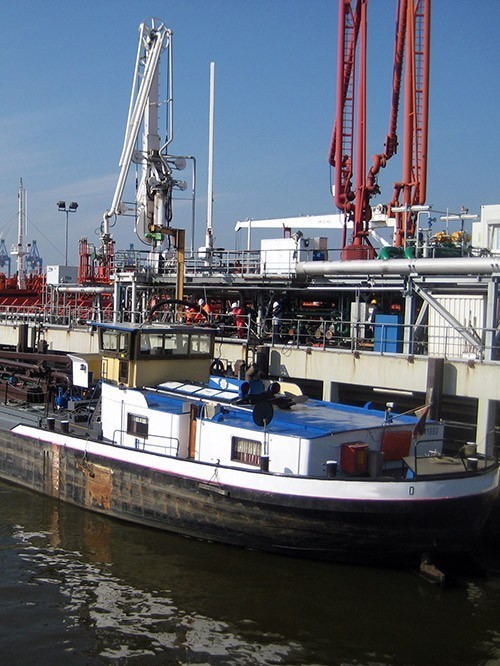The loading and unloading of oil or chemical tankers with petroleum products or flammable liquids can create a hazardous environment. Owing to the potential difference between the tanker and the pier or dock, sparking can occur at the connecting points of unloading hoses, loading arms or other conductive equipment. Such sparks are able to ignite the surrounding flammable atmosphere.
Although typically described as a grounding or earthing system, it might be better to consider such a marine system as being for the equipotential bonding of the vessel and the dock. This is because a potential difference may be caused by galvanic processes, rather than the build up of static electricity, as can be found during, for example, road tanker loading.
The galvanic or electrochemical process occurs in the marine environment, when the metal hull of the tanker and the metal construction of the loading dock form a galvanic cell, with the sea water acting as the electrolyte between them.

One set of advice, to avoid sparking, is to completely isolate the vessel from the shore by using non-conductive fittings and hose flanges. However, there is still the risk that a conductive connection could be created by chance, such as via walkways or with metal ropes giving rise to unregulated current flow.
In order to reduce this risk, an effective equipotential bond should be considered as an additional safety measure. The Timm SEK-3 establishes ship to shore bonding for regulated equipotential equalisation to the highest level of safety.
Key points:
- Effective low resistance bonding line, specially designed for maritime applications
- 2 clearly visibly LEDs on the front of the device
- Easy check of a proper grounding connection via additional status LEDs on the grounding clamp
- Usage under extreme environmental conditions: sturdy stainless steel housing with IP 65 and wide temperature range (-40 °C to +60 °C)
- The non-Exd design of the control unit allows opening during operation in hazardous areas
- Over 30 years of experience with Marine Grounding Systems





